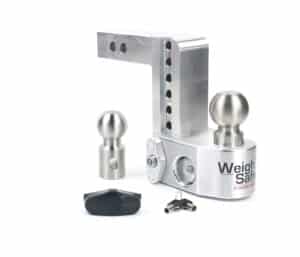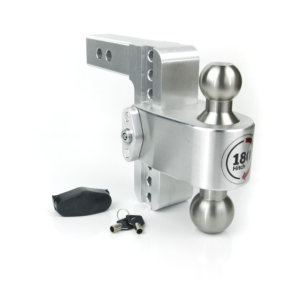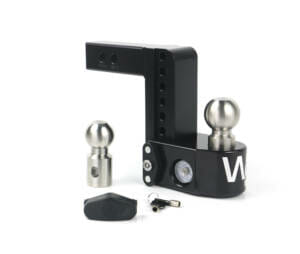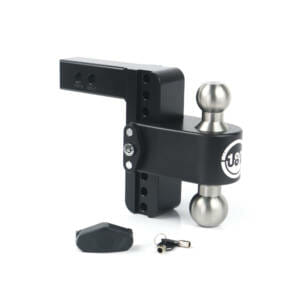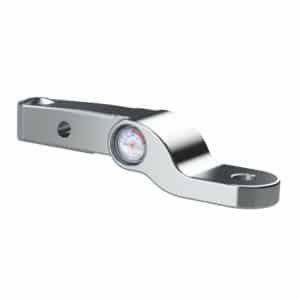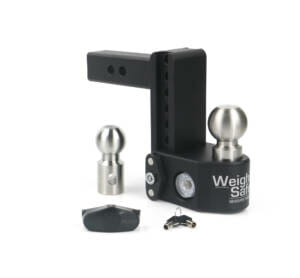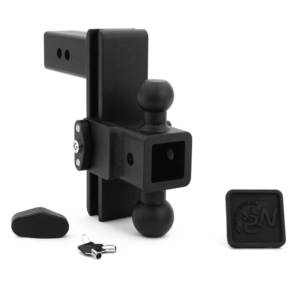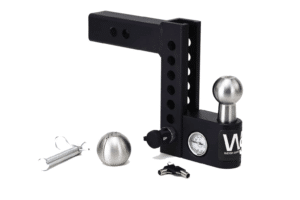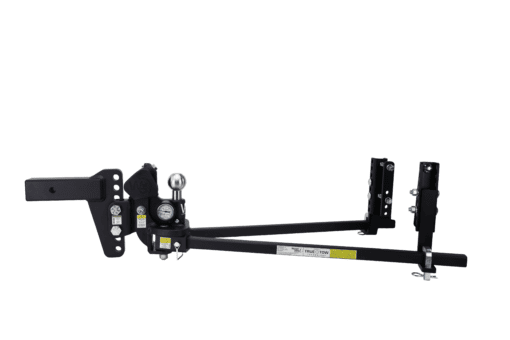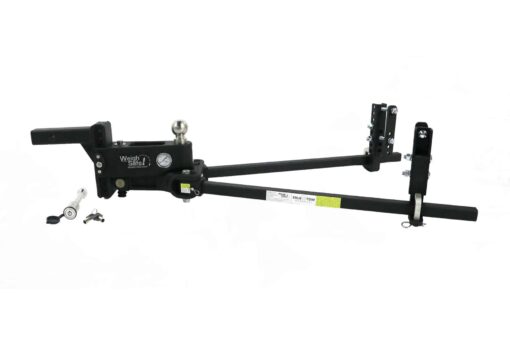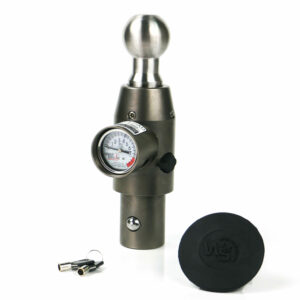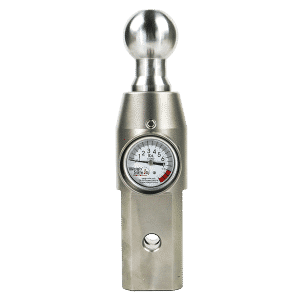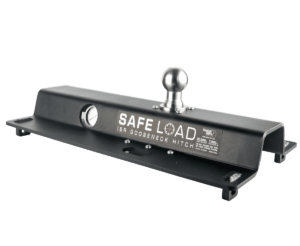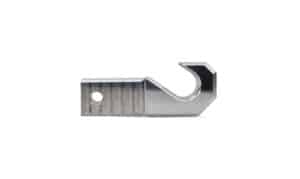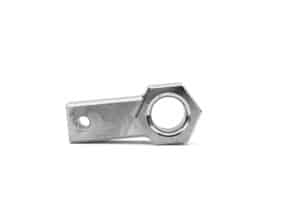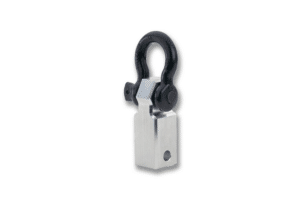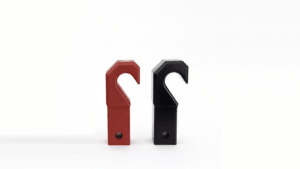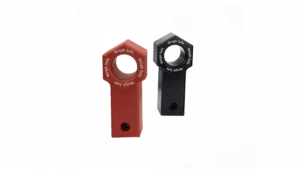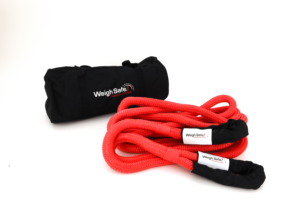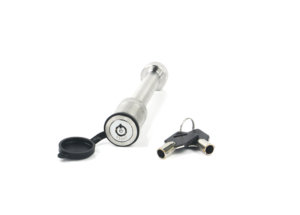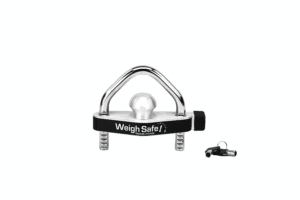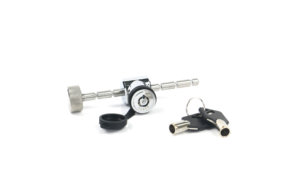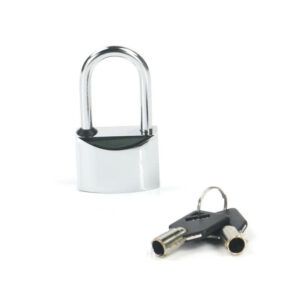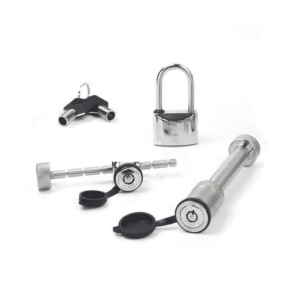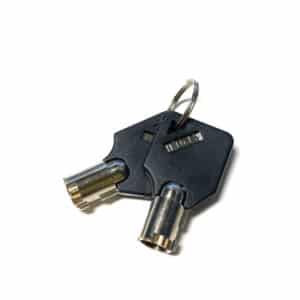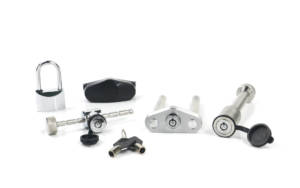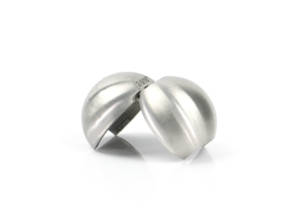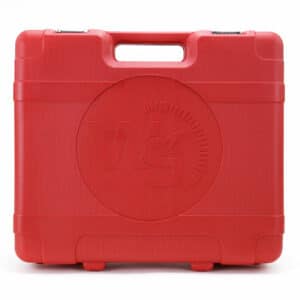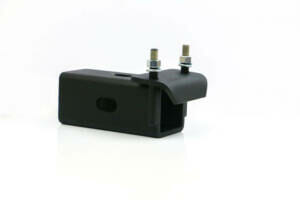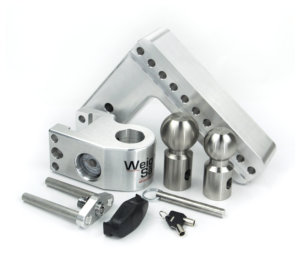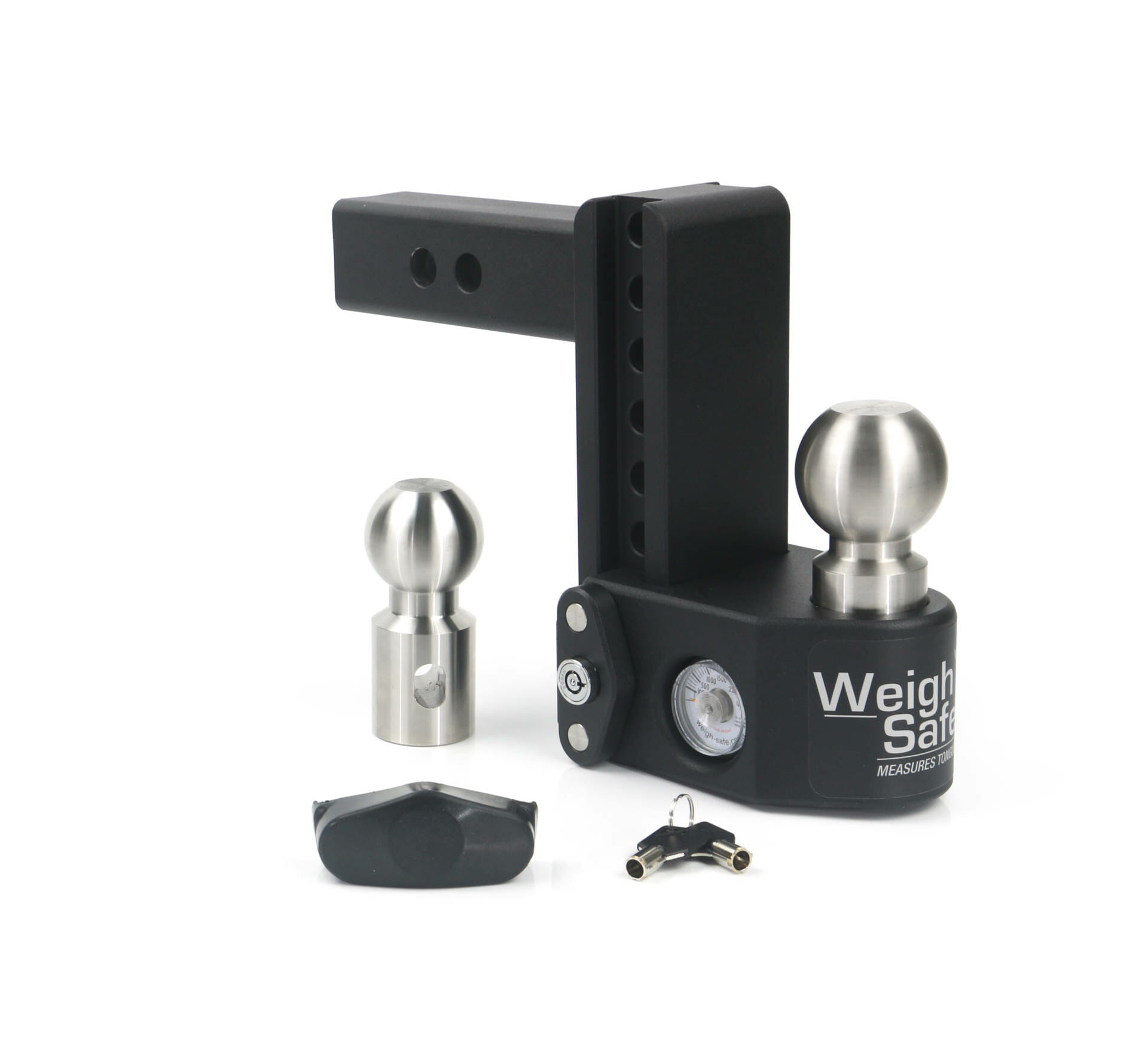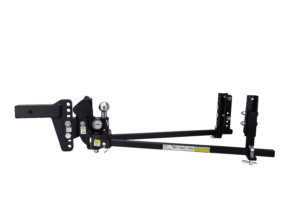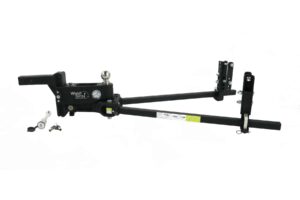Towing Safety
7 Risks of Not Measuring Trailer Tongue Weight & Why Is Tongue Weight Important
There’s a huge towing problem scaring drivers across the globe: Unsteady tongue weight that isn’t safe.
Alright, time to lay it down: At its most basic, your trailer hitch should do three main things:
- Match the receiver size and tow capacity of your truck
- Meet, or exceed, the GVWR (gross vehicle weight rating) of your trailer
- Level out your tow connection to ensure your load is level, balanced, and stable
It’s pretty easy to calculate the first two things, but let’s talk seriously about loading your trailer, measuring, and maintaining a proper tongue weight.
Sure, you may be experienced enough to know when a tow set up ‘looks’ level, but even so – it’s probably (definitely) not ever a good idea to ‘eyeball’ tongue weight.
But, does measuring your tongue weight before you tow really eliminate that much risk?
Hint: the answer is, heck yes it does. Here’s why…
Why Tongue Weight Matters
Okay, so you might be thinking, “Who really drives to the weigh station and calculates their tongue weight before they tow?”
Or perhaps you are saying: “My trailer experience is legendary – I can tell when my tongue weight is sitting right.”
We get it. We do. You’re right: a lot of people don’t have reasonable access to a weigh station scale, or would rather avoid taking the time to calculate tongue weight before every single tow trip – so they resort to guessing. And, truthfully, some can’t determine their target tongue weight because they don’t know what tongue weight is. (Pssst, if this is you – you may want to check out our Definitive Guide to Safe Towing, written just for you!)
But, do you know what happens when you tow with improper tongue weight?
BAD. STUFF.
There are two main categories of catastrophes: those caused by not enough tongue weight, and those caused by too much.
#1 – Trailer sway: ‘fishtailing’ or side-to-side movement
If you hook up your trailer with less than 10% of your GTW (Gross Trailer Weight) situated on the tongue of your trailer you will have:
- too little tongue weight
- too much of your load situated behind the axle of your trailer
- an unlevel tow set-up that “peaks” at the hitch connection
- conditions in which trailer sway will most likely occur
Why is trailer sway so dangerous? Let us explain…
#2 – Loss of steering control
The swaying side-to-side movement of a trailer can escalate very quickly, especially when you’re traveling fast. Enough momentum caused by the sway-force of your trailer can completely, and swiftly, overturn your truck in a matter of seconds.
Check out our Trailer Sway Demonstration Video
#3 – Rear tire overload
On the other hand, if you hook up your trailer with more than 15% of your GTW situated on the tongue of your trailer you will have:
- too much tongue weight
- too much of your load situated ahead of your trailer’s axle
- an unlevel tow set-up that looks more like a “V” shape, referred to as “jack knife”
- conditions in which rear tire overload will most likely occur
Why is rear tire overload so dangerous? This brings us to risk number four…
#4 – Unresponsive braking
As you drive, excessive tongue weight can beget enough force to push your back tires around. This is especially dangerous when turning corners and curves. It also puts your braking system at risk for becoming overwhelmed and unable to find enough traction. And, when that happens, the extra weight you’re towing behind your truck will be unrestrained. Not to mention – any type of frequent heavy braking, with heavy loads, at higher speeds, will run down your brakes and make them less effective.
#5 – Blown tires
Your truck has weight restrictions. While the weight of your total load may be well within your truck’s tow capacity, if you carelessly situate your trailer’s cargo in a way that lays too much tongue weight on on the rear of your truck, the back tires of your truck will be shouldering more weight than they are designed to handle. Too much tongue weight while driving on the road can easily cause the most stressed tire to blow out, or come off completely.
May we also emphasize – a tire blowout on the highway (while towing a trailer) can also trigger the first four catastrophes we’ve already mentioned, like a domino effect.
#6 – Traffic accidents and citations
It should be clear to all those who drive on the road, especially while towing trailers and cargo, that you have a serious responsibility: to understand how to use your tow equipment safely. If you cause a traffic accident because you failed to hook up your equipment in accordance with safety ratings and instructions, it’s a violation – and you’ll receive a traffic citation.
# 7 – Serious injury or death
And, ultimately, towing with too much – or not enough – tongue weight proves deadly when it results in a crash.
So, yeah, you need to measure your trailer’s tongue weight.
But, you don’t need to rely on inefficient bathroom scales, make a trip to the weigh station, or purchase a separate tongue weight scale: You just need a trailer hitch with a built-in tongue weight scale.
Because when you hit the highway with unsafe trailer tongue weight, other drivers view you as the jerk on the road who is:
- Uniformed
- Careless
- Willing to risk safety of self and others
And, we all know you’re none of those things. You care about towing safety.
Which is why you’re here.
Tow With Total and Complete Peace of Mind
If you are ready to stop risking safety, and interested in experiencing complete and total towing peace of mind, keep reading. We’ve lined-up seven of our best tips for countering the risks of unsafe, unsteady tongue weight, right here:
#1 – Tow with correct drop or rise
If your trailer rides lower or higher than your truck, a specific ball mount can be used to make up the difference and ensure the trailer is level. When loaded, both your truck and trailer must be level with the ground.
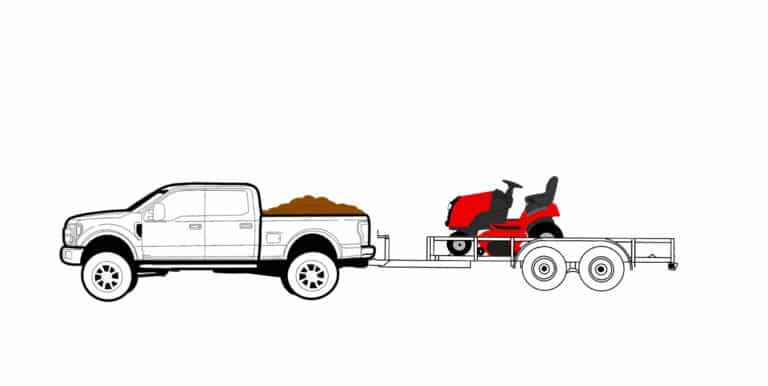
You’ll need to make some calculations to determine how much of a drop, or rise, your ball mount requires to meet the height of your loaded trailer:
Drop Length Formula (for trailers that ride lower than your truck)
- Measure the distance from the bottom of your trailer’s coupler to the ground (be sure your trailer is loaded and sitting level with the ground while you measure).
- Subtract this number from the height of your hitch receiver (distance from the top of the inside of your truck’s hitch receiver to the ground).
- This is the required drop length of your ball mount.

Rise Length Formula (for trailers that ride higher than your truck)
- Measure distance from the bottom of your trailer’s coupler to the ground (be sure your trailer is loaded and sitting level with the ground while you measure).
- From this number, subtract the height of your hitch receiver (distance from the top of the inside of your truck’s hitch receiver to the ground).
- This is your required rise length of your ball mount.
Pro tip: Be sure your trailer is exactly level with the ground by placing a level on the top of your trailer’s coupler. Use the crank on your trailer jack to adjust the height, up or down, until the level is plumb, then take your measurement.
#2 – Calculate your target tongue weight
For conventional trailer hitches, the recommended amount of tongue weight is 10% – 15% of your loaded trailer’s weight. Use this formula to calculate the recommended amount of tongue weight for your trailer:
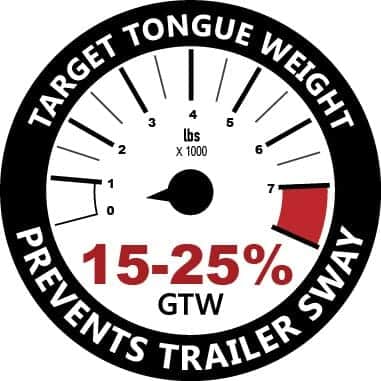
Target Tongue Weight Formula
- Find your GTW (Gross Trailer Weight. This is the weight of your trailer, plus the weight of the cargo you’ve loaded onto it. GTW can also be referred to as GVW, Gross Vehicle Weight).
- Multiply GTW by (0.1).
- This is the minimum of your target tongue weight.
- Multiply GTW by (0.15).
- This is the maximum of your target tongue weight.
# 3 – Accurately adjust your tongue weight
Once you’ve calculated your target tongue weight, you’ll need to situate your load onto your trailer accordingly.
This is where a Weigh Safe Hitch comes in.
Every Weight Safe Hitch has a built-in tongue weight scale to accurately weigh your trailer’s tongue weight for you. Use it to help you adjust the position of the cargo until your trailer’s tongue weight measures within your target range. This will likely involve putting heavier cargo items ahead of the trailer axle, but not all the way towards the extreme forward edge.
Pro tip: You’ll also need to center heavy items left-to-right and position them as low to the trailer deck as practical. Be sure to secure loose items — particularly the heavier ones — so they can’t move and alter the trailer’s tongue weight underway.
# 4 – Consider a drop hitch
Adjustable trailer hitches are one of the many great solutions that make towing easier and safer. With so many different trucks and trailers out there, adjustable trailer hitches make it easy to tow numerous trailers on an array of different tow vehicles with one single hitch.
Meet the Weigh Safe Drop Hitch: An adjustable trailer hitch with a built-in scale.
The easiest solution for:
- measuring tongue weight
- making vertical height adjustments
- switching between different tow ball sizes
- towing a variety of trailer types
PRODUCT FEATURE:
Weigh Safe Adjustable Drop Hitches come in an array of different draw bar drop lengths ranging between 4 to 10 inches, each with 1” increments for adjustability. All of which can be used in both the drop and rise position.
# 5 – Assess your trailer for weight distribution requirements
Your truck’s owner’s manual should provide you with specifications regarding weight distribution use. For instance, the 2018 Chevy Traverse owner’s manual states that weight distribution and sway control are required when towing a trailer over 5,000 lbs. You can also use this checklist to determine if you need a weight distribution hitch:
Indicators You Need A Weight Distribution Hitch:
- Your trailer weight (GTW) is more than 50% of your truck’s weight (GVWR)
- The rear of your truck sags when the trailer is hooked up
- You experience trailer sway
- Your truck’s headlights point upward
- You find it difficult to steer or stop
- You want to tow to the highest capacity allowed by your trailer hitch
If you’ve determined you need a weight distribution hitch, get started by reading our Complete Guide to Towing with a Weight Distribution Hitch
#6 – Perform truck and trailer maintenance
Safe towing also means getting to know your equipment, learning how to install it, and understanding how to operate and maintain it. You’ll get more comfortable with your equipment over time, but here’s a helpful checklist to go over each time you hit the road:
Towing Trip Checklist:
- Go over your calculations and formulas one more time. In the event of an accident, or being inspected – if you have not adhered to the safety recommendations, specifications, and ratings of your truck, hitch, and trailer – it’s a violation and a ticket.
- Check your truck and trailer tires.
- Your truck tires may require higher pressure for towing, as recommended in the owner’s manual.
- Your trailer tires may have dry rot or cracking, especially if your trailer has been stored outside and/or hasn’t been used for a season.
- Don’t forget to check the wheel lug nuts on your trailer and truck are tightened to the specified torque.
- Check your oil, fluids, and brakes. Towing puts additional stress on your truck. So before heading out on a towing road trip, be sure your truck has:
- had a recent oil and filter change
- brake pads with plenty of life remaining
- its engine coolant filled to the proper level in the reservoir
- plenty of transmission fluid
If your trailer has brakes, it’s also a good idea to have those checked, as well, and to keep the wheel bearings greased.
- Take a spare tire kit for your trailer. Make sure you have at least one spare tire for your trailer. You’ll also want a lug nut wrench specific to your trailer’s wheels, as well as a jack that will work properly with your trailer.
- Cross your trailer’s safety chains. Don’t just run them straight. Crossed chains are meant to form a ‘cradle’. If the hitch was ever to fail, the tongue of the trailer would fall down into the crossed chains, rather than digging into the pavement. The chains should have enough slack to permit sharp turns, but not drag on the road.
- Check trailer lights. Inspect the wires by hand; they should be loose enough to permit turns without getting disconnected, but tight enough that they won’t touch the road. Be sure the trailer’s running lights, brake lights, turn signals, and hazard lights are all working properly.
- Consider towing mirrors. If your trailer is wider than your truck, look into getting wide aftermarket tow mirrors to help you see your trailer’s blind spots while driving and to aid rear visibility when backing up.
- Plan Ahead for Fuel Stops. You’ll generally use more fuel while towing, and stopping at a small, remote gas station is not so easy with a large truck and trailer.
- Use wheel chocks. When unhooking the trailer from your truck, place wheel chocks (sturdy, wedge-shaped blocks) in front of and behind the trailer’s tires to ensure the trailer doesn’t roll away when you release the hitch.
#7 – Use safe driving techniques
As we’ve emphasized, in many cases, your trailer will weigh more than your truck, and all that extra weight behind your truck has a huge impact on your truck’s driving ability. You’ll need to learn new driving techniques to ensure safety on the road while towing:
Safe Driving Techniques For Towing:
- Allow for longer stopping distances. Be more attentive to vehicles stopping suddenly ahead of you when towing, and begin braking sooner than if you weren’t towing.
- Drive in the right lane on highways as much as possible. This will make it easier for you to get over to the shoulder if ever you need extra stopping room or happen to have a tire blowout.
- Don’t ride your truck’s brakes on long downhills. Shift the truck’s transmission to a lower gear to help slow the vehicle and take some strain off of the brakes. Applying the brakes at intervals to keep the speed in check (as opposed to constant application of the brake pedal) will help keep the brakes from overheating.
- Adjust trailer brakes according to load. For example, if your trailer is equipped with brakes, you’ll want them set to use a lot of force when towing a heavy load, but when the trailer is empty, the trailer’s brakes need to be readjusted for that lighter weight, so the trailer’s tires aren’t locking up and skidding.
- Consider Height: Trailers can be much taller than the truck, so keep clearances in mind when pulling into gas stations or low bridge situations
- Take constant care to make wider turns at curves and corners. The trailer tires are more likely to hit or ride up over curbs.
- Use a spotter when backing up. Have someone outside at the rear of the trailer while backing up whenever possible. Even wide tow mirrors can’t provide all the visibility you may need, particularly in situations where there are other vehicles, objects, or people in close proximity.
- Check your route ahead of time. Some roads don’t allow trailers on them, and certain roads also have weight, height, and width limits. Plan your route ahead of time to avoid the hassle of having to backtrack to find roads that allow your rig.
Conclusion
Properly loading your trailer to maintain proper tongue weight is vital when it comes to safe handling and driving control. But, you don’t need to be worried or afraid – you can tow with complete and total peace of mind when you follow our simple tips for measuring tongue weight.
Want more free towing tips?
Browse some of our how-to videos, or feel free to follow us on instagram or facebook!
Contact us with any of your questions. We’re here to help!
